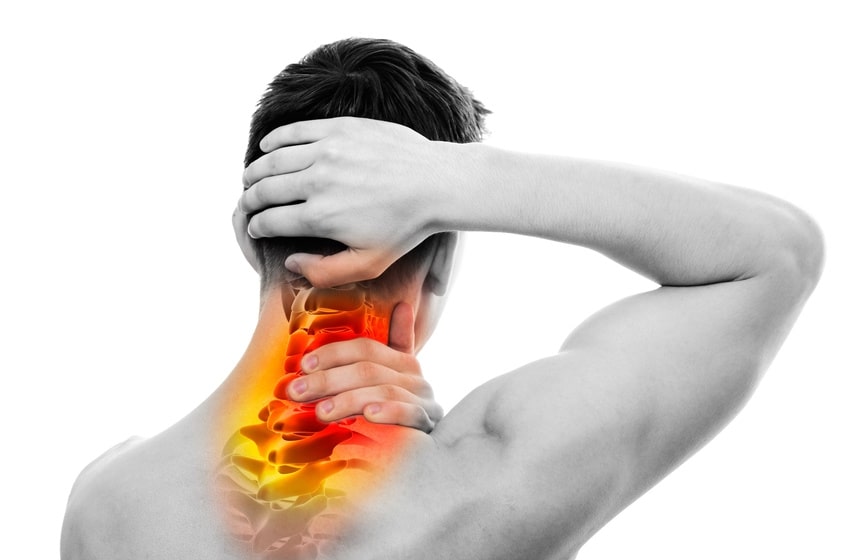
Trigger points are commonly thought to be a sensitive area within a muscle or connective tissue (fascia) that becomes painful when touched or overworked, and sometimes they can refer pain to other parts of the body. There could be numerous possible causes for a trigger point, such as an acute injury, repetitive overuse, or irritation of facet joints in the spine, to name a few.
Trigger point pain is thought to result from nodules—or tight “knots”—that develop in the otherwise smooth muscle. One theory for treating these types of trigger points is to do exercises that reduce and disrupt the nodules that have been causing pain.
Trigger Point Exercises
Here are two exercises that can help relieve some types of trigger point pain:
1. Foam Roller
A full-length, 6-inch diameter foam roll can be used to work out some of the trigger point pain that often accompanies neck pain.
- Place the foam roll on the ground.
- Lie on it lengthwise.
- Place the hands on the hips.
- Roll slowly sideways keeping the torso parallel to the ground until the foam roller rolls over the scapular muscles where the sore trigger points are located.
- Slowly roll 20 times to each side.
2. Racquetball
A racquetball can be used to self-massage shoulder blade trigger points as well.
- While leaning with the upper back against the wall, place the racquetball between the tender muscles of the shoulder blades and the wall.
- Using the legs to move the body, roll the ball up and down on top of the muscles for about 2 minutes.
Trigger Points Still Being Studied
There is not a consensus in the medical literature regarding what constitutes a trigger point and how they develop. However, most definitions tend to describe a trigger point as having the following:
- Tight knot-like nodule within a muscle or fascia that can be felt upon palpation, such as by oneself or during a medical examination.
- Tenderness and/or pain that is felt locally and may spread to a different area of the body.
- When touched, the muscle may twitch and pain may increase in a familiar referral pattern.
- Decreased range of motion in the area surrounding the trigger point due to pain and tightness.
Many people have reported finding relief from trigger point pain by incorporating exercises that target their specific trigger points, such as those mentioned above for the neck and back.
Precision Pain Care and Rehabilitation has two convenient locations in the Richmond Hill – Queens and New Hyde Park – Long Island. Call the Richmond Hill office at (718) 215-1888, or (516) 419-4480 for Long Island office, to arrange an appointment with our Interventional Pain Management Specialist, Dr. Jeffrey Chacko.













